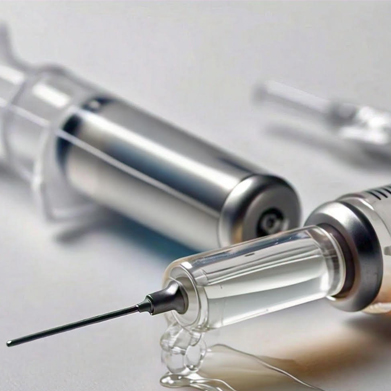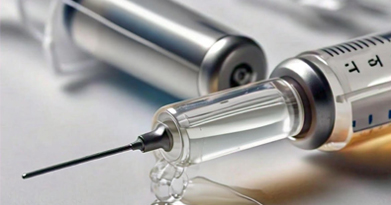
Once a common treatment for anyone with knee pain, steroid injections are now more closely scrutinized due their toxic effects on cartilage, especially in younger patients with preserved joint space. Steroid injections, overall, are not great for joint preservation. However, they are quite effective in symptom management. One of the most common reasons for a steroid injection into the knee is osteoarthritis (OA).
OA, also known as degenerative joint disease or “wear and tear” arthritis, is estimated to affect more than 10 million individuals in the United States. Symptomatic OA typically affects older individuals and is characterized by a progressive loss of articular cartilage, reduced quality of life, and eventual disability. Figure 1 demonstrates knee x-rays of patients with classic OA, showing loss of joint space, osteophytes or “bone spurs” and subchondral sclerosis. Risk factors for developing accelerated OA include genetics, female sex, obesity, and prior knee injuries. Common clinical symptoms include knee pain, stiffness, swelling and discomfort with ambulation after prolonged sitting or resting.

Treatment for OA often begins with conservative measures including weight loss, activity modification, physical therapy, and nonsteroidal anti-inflammatory drugs (NSAIDs) and progresses to surgical treatment options after conservative treatment fails. Cortisone shots, also known as corticosteroid injections (CSI), are a well known treatment option for OA. However, recent studies have raised the concern that knees treated with CSI may be at risk of OA progression by accelerating cartilage loss.
A 2017 randomized controlled trial out of Tufts Medical Center published in JAMA investigating the effects of intra-articular CSI vs intra-articular saline on knee cartilage volume and pain in 140 patients with knee OA over a 2 year period concluded that compared with intra-articular saline, patients treated with CSI resulted in significantly greater cartilage volume loss.
In 2022, Felson et al. compared pre-and post-injection x-rays in over 980 knees to generate rate ratios of radiographic progression and total knee replacement risk comparing CSI and hyaluronic acid (HA) injections. Interestingly, the study concluded that even after a seven-year follow-up period the rate ratios of OA progression were similar between CSI and HA injections suggesting intra-articular CSI are not associated with increased risk of progression compared to HA injections. Furthermore, the study also concluded no significant differences in rates of OA progression and total knee replacement in patients receiving CSI and HA injections. These findings suggests the risk of OA progression attributed to CSI in prior studies may represent more advanced OA in those receiving CSI and must be taken into account when evaluating the efficacy of CSI across a wide range of varying OA severity which can be assessed using the Kellgren-Lawrence Classification of OA.
In summary, knee steroid injections should largely be reserved for those patients with moderate to severe arthritis who are older in age. Knee steroid injections are bad for knees that have preserved joint space due to the toxic effects of the steroid on the cartilage. I often see young patients for second opinions who have had their knees injected multiple times with steroids due to “knee pain.” I caution younger patients on the detrimental effects of steroid and often provide alternatives such as platelet rich plasma injections and anti-inflammatory knee sleeves.
Please call and schedule an appointment with a board-certified orthopaedic surgeon who specializes in sports medicine when deciding which treatment is best for you.







